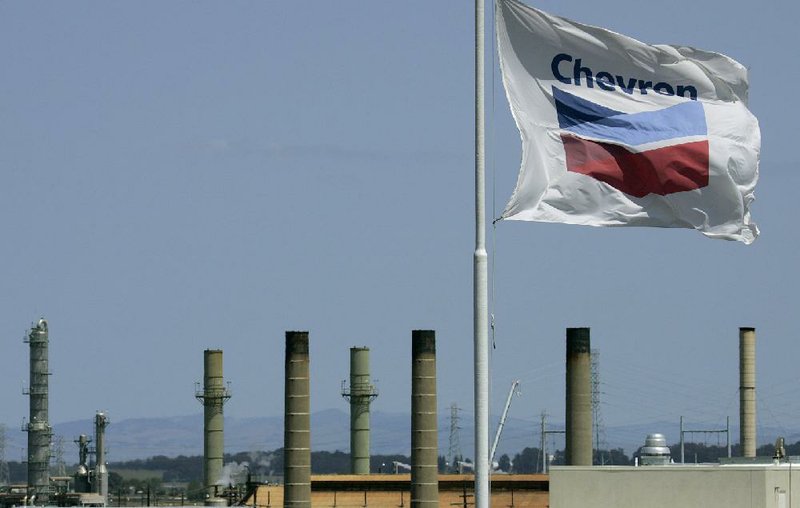NEW YORK - Chevron Corp.’s net income fell 4.5 percent in the first quarter as oil prices fell and refinery output declined.
Chevron, the second-largest U.S. oil company, has delivered better profit margins than the other major energy firms in recent years because a big part of its production mix is oil, which has been fetching high prices. Rivals, such as Exxon Mobil Corp., produce more natural gas in the U.S., where natural-gas prices have been low.
But crude prices fell across the globe in the first three months of this year as Europe remained mired in recession and growth in China slowed. That reduced Chevron’s revenue and profit.
Chevron, based in San Ramon, Calif., reported Friday that net income fell to $6.18 billion, or $3.18 per share, on revenue of $56.82 billion. Last year, the company earned $6.47 billion, or $3.27 per share, on revenue of $60.71 billion.
The profit exceeded analysts’ average forecast of $3.09 per share. Shares rose $1.53, or 1.3 percent, to close Friday at $120.04.
Chevron did manage to increase production, although just slightly. Output of oil and gas rose to 2.65 million barrels per day from 2.63 million barrels per day in last year’s quarter.
But Chevron’s average sale price for a barrel of oil slipped to $94 from $102 last year in the U.S. and to $102 from $110 abroad. Natural-gas prices edged up around the world, but not enough to offset the decline in oil prices.
Chevron hopes to increase production by 25 percent to 3.3 million barrels per day by 2017. The company is developing 50 projects that will each cost it $250 million or more and 16 that will cost at least $1 billion each.
Production at Chevron’s bigger rival, Exxon Mobil, has been slipping, but Exxon produced 4.4 million barrels per day in the first quarter, two thirds more than Chevron.
Chevron’s output has been partly constrained by the shutdown of production at an offshore Brazilian platform after two spills last year.
Earlier this month, Brazilian regulators gave Chevron permission to restart production.
Pat Yarrington, Chevron’s chief financial officer, told investors Friday that the operation in Brazil’s Frade field would restart in the second quarter.
Yarrington said a liquefied natural-gas project in Angola will also begin operating in the second quarter and will add 20,000 barrels per day in production this year, then 60,000 barrels per day next year.
Performance at Chevron’s refining operations slipped because of maintenance and upgrades at refineries in El Segundo, Calif. and Pascagoula, Miss., and continued repairs at its Richmond, Calif., refinery in the wake of an August fire.
Refinery output fell 38 percent to 576,000 barrels per day.
Yarrington said the El Segundo and Pascagoula refineries are operating at normal levels again. The Richmond refinery has begun taking in crude and is expected to restart in the second quarter.
Brian Youngberg, an analyst at Edward Jones, said Chevron’s disappointing U.S. refining results were the only “hiccup” in an otherwise solid quarter.
Business, Pages 27 on 04/27/2013

